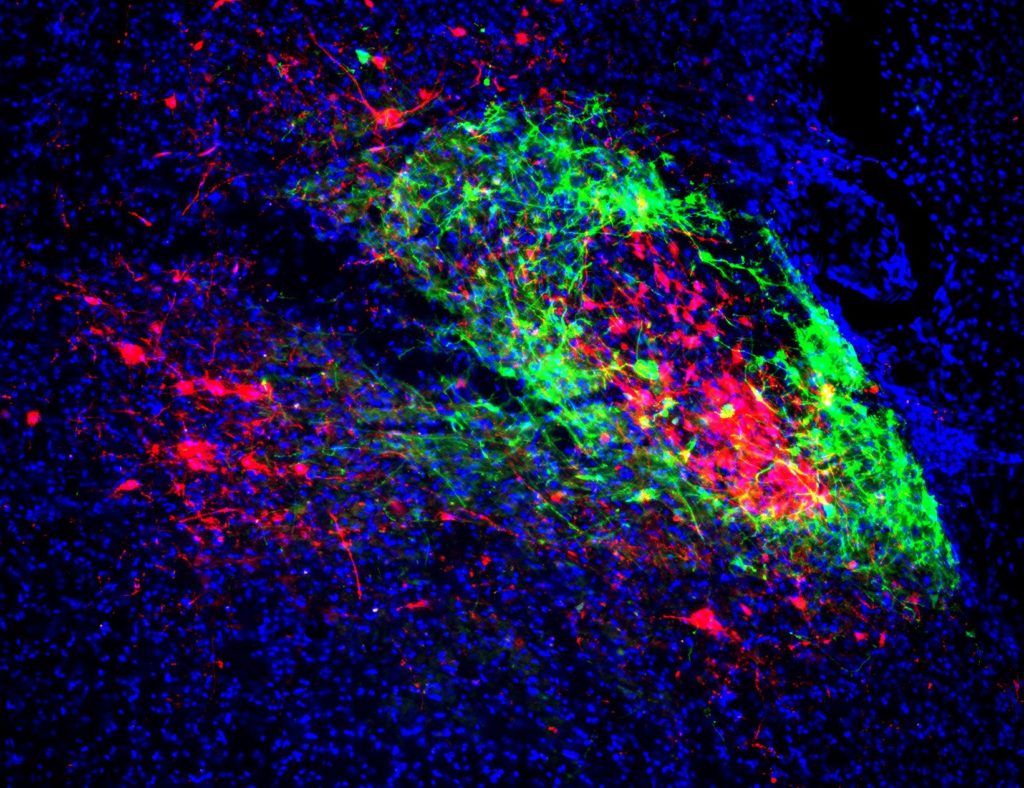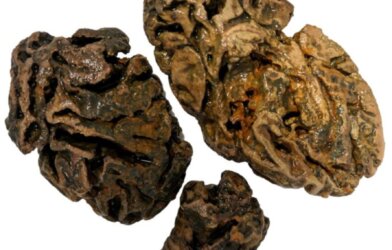A previously unknown neural network in the brain that coordinates breathing rhythm with feelings of pain and fear has been discovered by researchers with the Salk Institute for Biological Studies. Their findings may contribute to an abundance of areas in the field of pain management, as well as the development of an analgesic that would prevent overdose deaths due to disrupted breathing, known as opioid-induced respiratory depression (OIRD).
Researchers concentrated their study on a group of core-shell configured neurons in the brainstem called the lateral parabrachial nucleus. The neurons found in the core project to the amygdala, the part of the brain responsible for processing the emotions of fear and pain, while the neurons in the shell project to the region of the brain that controls breathing rhythm known as the pre-Bötzinger complex. The areas these neurons project to have influence on one another, resulting in changes to our breathing pattern when feeling anxiety or pain.
“We are the first group to demonstrate how the lateral parabrachial nucleus coordinates breathing and pain,” says Sung Han, senior author and assistant professor in Salk’s Clayton Foundation Laboratories for Peptide Biology, in a statement. “By understanding the circuits in this brain region, we may be able to tease apart breathing regulation and pain regulation to develop a medication that inhibits feelings of pain without repressing breathing, like OIRD.”
OIRD is the leading cause of death in people suffering from an opioid addiction, causing individuals to suffer from pain and repressed breathing. Han has concentrated his time and energy on studying this issue. His past research has demonstrated that opiates, such as morphine, repress breathing by triggering certain receptors known as mu opioid receptors (MOR). The triggering of these receptors in turn leads to the inhibition of neurons that express them.
To demonstrate the way the neurons synchronize breathing with pain and emotions, researchers employed light and chemical agents to show that manipulation in the lateral parabrachial nucleus of MOR-expressing neurons will alter the breathing rate of mice.
To show how these neurons coordinate breathing with pain and emotions, the researchers first used light and chemical agents to prove that manipulating the MOR-expressing neurons in the lateral parabrachial nucleus alters breathing rate in mice.
Next, the inputs and outputs to the MOR-expressing neurons were mapped using fluorescent tracers. According to their findings, neurons concentrated in the region’s core project to the central amygdala, while neurons clustered in the surrounding shell project to the pre-Bötzinger complex. Electrophysiological recordings of one population while stimulating the other population revealed that certain parts of the subpopulations are mutually related through an excitatory network. It was through this network that fear and pain signals were linked with breathing patterns.
“We have found very intricate circuits involving upstream and downstream input to these neurons,” says Shijia Liu, first author and graduate student in Han’s lab. “By uncovering this circuit mechanism, we can better explain why breathing can often be coordinated with pain and anxiety.”
With the knowledge gathered from this study, Han’s team is now embarking on genetic assessments of the core and shell populations in the hopes of uncovering functional markers that regulate pain or breathing.
“The biggest problem these days is that opioids reduce pain but also reduce breathing, so people die,” adds Han. “By understanding those two mechanisms in our research, maybe we can manipulate certain populations of neurons by pharmacological intervention so that we can control pain without changing the breathing.”
This study was published in the journal Neuron.
Article by Anna Landry













Comments